Today I’m sharing the ultimate 10 minute plyometric workout that every basketball player should include in their regular training to build or maintain athleticism and power.
This routine is quick and easy to do at any point throughout your season.
For anyone who wants better hops or to start being more agile on their feet, I recommend starting to implement these plyometric drills as a warm-up before every single one of your training sessions.
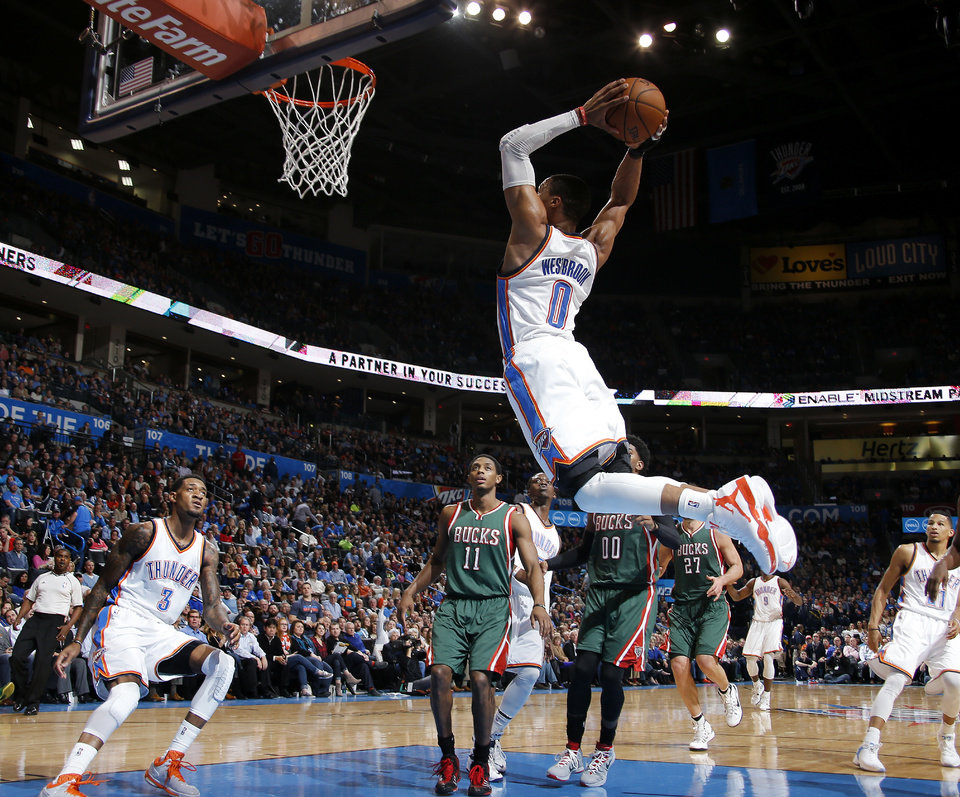
I recently had a basketball player reach out to me with a story that a lot of you might relate to.
This guy was working his program while playing at college and began struggling with some knee issues. This eventually led to him gaining some weight and losing a lot of athleticism.
Since this guy was an amazing shooter, I immediately saw the potential in him to become a great player.
My initial goal was to work on getting him to move like an athlete.
So I started having him use this 10 minute plyometric workout and saw major changes in his quickness and agility. Within a few weeks he was making crazy new strides on the court.
Move Like an Athlete
If you’re an unathletic basketball player that looks “stuck in the mud” while moving on the court, this is for you.
Not only will this workout help you improve on speed and power from the additional plyometrics, it will also maximize whatever results you’re getting from strength training.
Let me explain these three important drills:
- Dot Drill
- Reactive Plyometric Jumps
- Max Effort Jumps
THE 10 MINUTE PLYOMETRIC WORKOUT
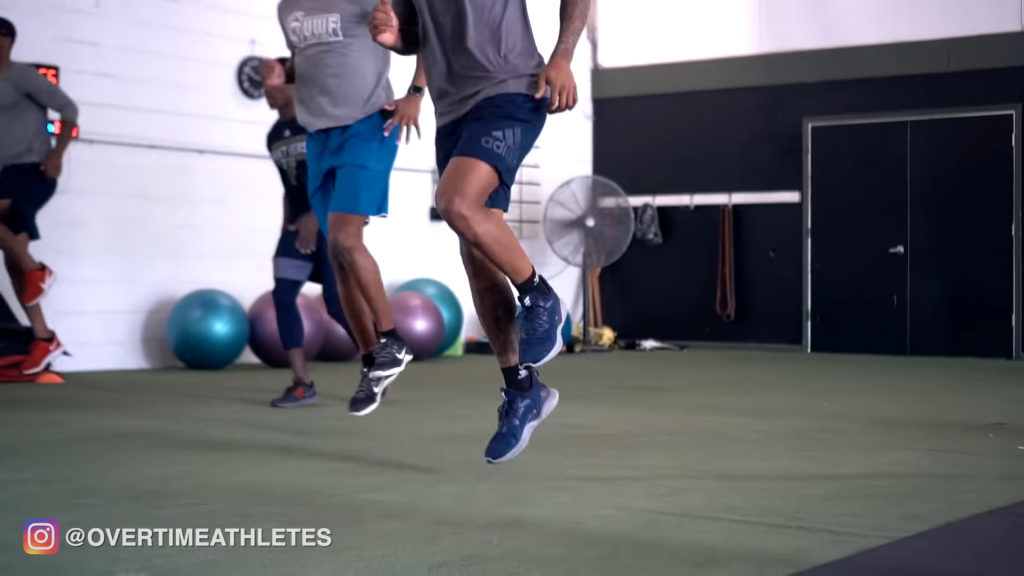
1. Dot Drill
Most times when an athlete is lacking agility on the court, they’re running very flat-footed.
This is an old drill you might even remember from the “Bigger Faster Stronger” football program. By incorporating the dot drill into your plyometric routine you can develop more quickness in your step
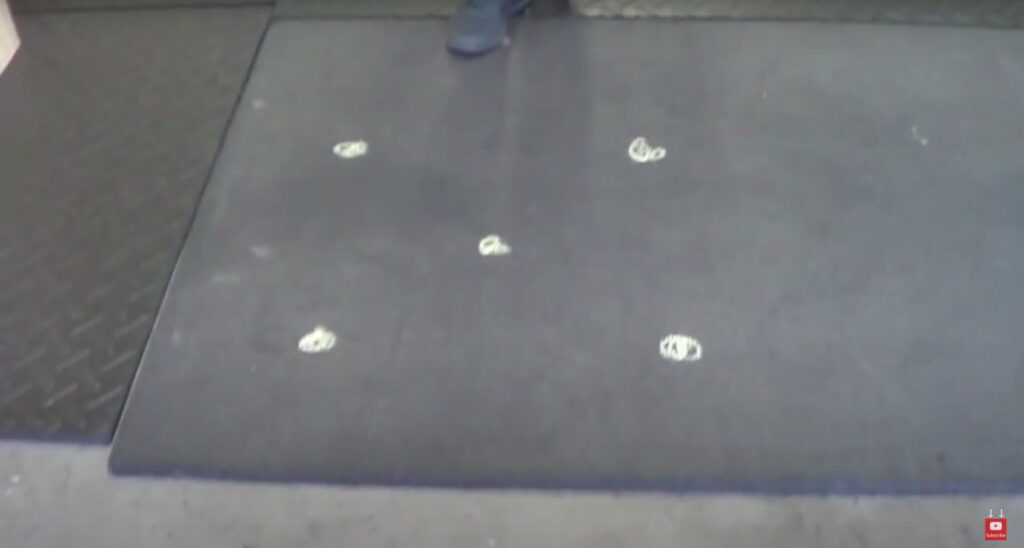
You’re going to draw five dots on the ground in front of you (buy some sidewalk chalk for this, or you could even use a straight line on the ground for this).
Moving as quickly as you can, go through this series of movements:
- Forward and backwards
- Figure- 8
- Unilateral (Moving side to side)
You can start with 3 sets of 20 seconds on each movement.
Once you’re comfortable hopping on both feet from dot to dot, you can begin going through all of these as a single-leg drill.
2. Reactive Plyometrics Jumps
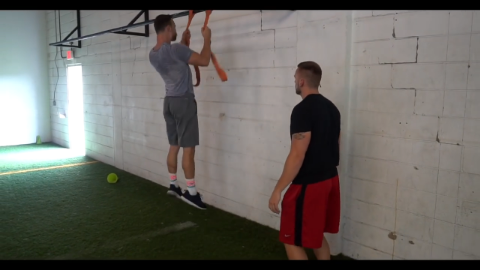
Basketball is such a reactive sport.
Whether you’re reacting off an opponent or popping up for a rebound, it’s always a quick movement.
This means that come game-time, you won’t have the time to ever fully squat down and prepare for a jump. Great basketball players have “springy feet.”
This ability allows them to get up and reach for the net in a split second.
- Start standing in front of a basketball hoop.
- For about 20 seconds, reactively jump up and touch as high on the hoop as possible.
- Complete 3 sets of 20 second intervals.
(Within each interval, count how many jumps you’re able to get in, so that you can work on increasing that number).
The key here is to be as quick as possible. As soon as the feet touch the ground, you’re right back up in the air again.
For any young or very new athletes that may be off balance doing these, you can start out holding on to two bands that are attached overhead and use them for support as you jump.
This drill will help to build power in the calves and ankles. Overtime you’ll start reducing your ground contact time and spend the game airborne.
3. Max Effort Jumps
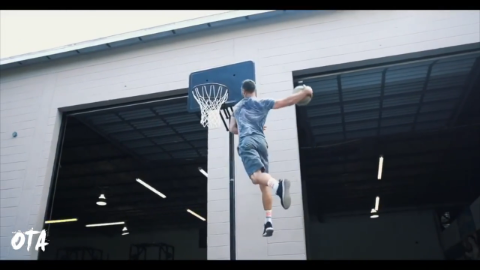
The last drill I like to incorporate into this plyometric workouts are max effort jumps.
This time, rather than going for our quick reactive jumps, I’ll have my athlete jump up as high as they can towards the basketball hoop with a one second reset.
For about a 10 second set, you’re going as high as you can on every single jump.
PLYOMETRICS FOR BASKETBALL
To be an amazing basketball player, you need more than just a warmup routine.
In fact, you need an ENTIRE PROGRESSION to really reach elite levels of basketball athleticism.

To learn more about taking your own approach to plyometric training, you can join myAdvanced Vertical Jump Series.
Inside, you’ll learn how to turn strength training to vertical jump results.
What to train before you start jumping…
How to progress your plyometric training…
And a whole bunch more.
1 Response to "10 Minute Plyometric Workout For Basketball"
[…] this 10 minute plyometric workout specific to basketball players, to prep your entire body for movement. This specifically focuses […]